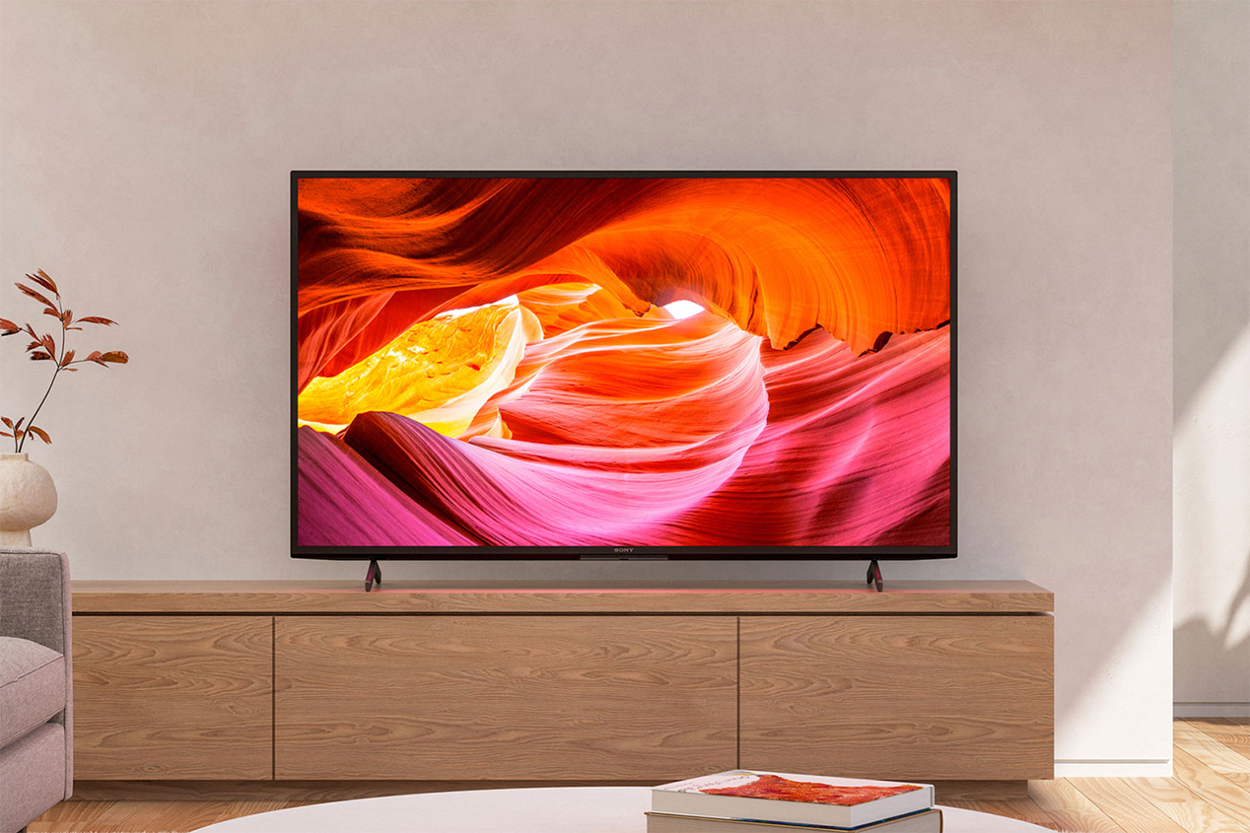 Selecting a television these days can sometimes feel like an obstacle course and your main objective is to figure out what all the different TV acronyms mean. It’s easy to feel a bit lost, particularly when it comes to LED TVs, because some of the new tech has similar-sounding names. Take Mini-LED and MicroLED as an example: both are a type of LCD TV backlighting, but MicroLED is a technology we’ll see more of in the future while Mini-LED is available right now on some newer TVs.
Selecting a television these days can sometimes feel like an obstacle course and your main objective is to figure out what all the different TV acronyms mean. It’s easy to feel a bit lost, particularly when it comes to LED TVs, because some of the new tech has similar-sounding names. Take Mini-LED and MicroLED as an example: both are a type of LCD TV backlighting, but MicroLED is a technology we’ll see more of in the future while Mini-LED is available right now on some newer TVs.
Mini-LED technology offers a lot to be excited about. TVs with this type of tech can approach the levels of near-black detail of their OLED cousins, while still giving you all the benefits of the mature underlying technology.
What is Mini-LED?
Mini-LED is an important breakthrough in LCD backlighting technology because it greatly reduces the size of the backlighting illumination source, which allows for significantly more individually controllable zones. This results in far more areas of illumination, a dramatic increase in contrast and colour quality, all while reducing issues like “blooming” that have long plagued lesser LCD models (more on blooming later in the article).
LCD TV basics
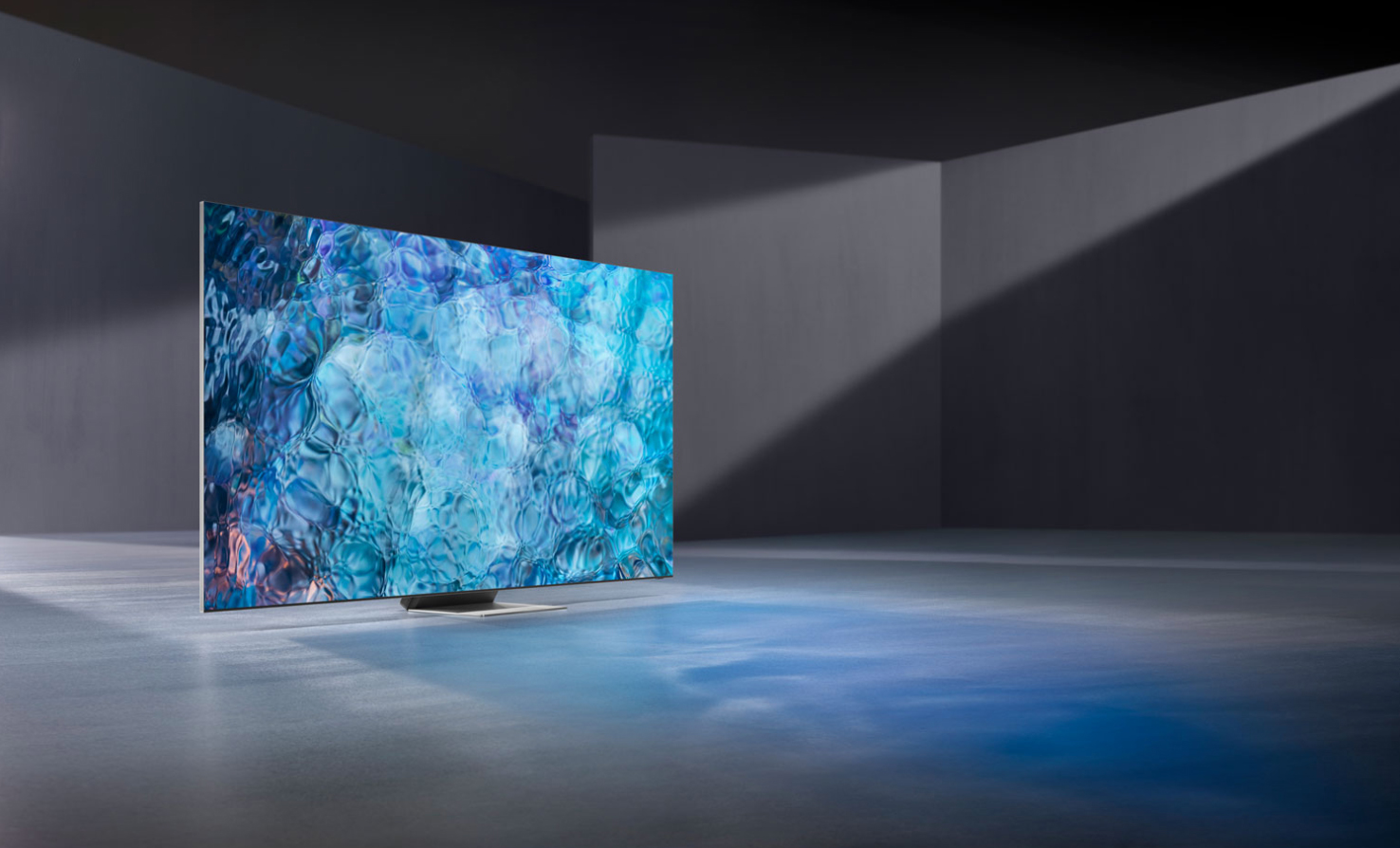 To understand Mini-LED, it’s important to realize how LCD TVs differ from self-emissive tech like OLED or the older Plasma and CRT (tube) models. On those other sets, each “pixel” can be either on or off, meaning that a given part of the screen can have pure black right beside another tiny dot of full luminance. So these displays could, for example, reproduce the image of a star field, where the deep black of space has these fine, pin-prick lights with no glow around each element.
To understand Mini-LED, it’s important to realize how LCD TVs differ from self-emissive tech like OLED or the older Plasma and CRT (tube) models. On those other sets, each “pixel” can be either on or off, meaning that a given part of the screen can have pure black right beside another tiny dot of full luminance. So these displays could, for example, reproduce the image of a star field, where the deep black of space has these fine, pin-prick lights with no glow around each element.
LCD TVs, on the other end, employ a dimmable backlight that shines through a series of crystals that represent the colours of the rainbow. When the scene is bright, the backlight increases in intensity, and when the scene is dark, it dims. The issue, of course, is when a screen has both dark and light elements at once (think of a checkerboard pattern). On lesser sets the result is a compromise, with the brightest elements dimmer than what is possible, and the dark areas a more murky grey rather than a deep black.
Most modern LCD TVs use Light Emitting Diodes (LEDs) that are controlled in groups. These are silicon chips that act like virtual flashlights shining through the LCD “windows”. The difference between LCD and tech like OLED is that on a self-emissive display, each pixel serves a very, very tiny flashlight that can only get so bright. LCD, on the other hand, works more like stain glass, where the colour is illuminated by a backlight that can be much brighter, but harder to control in more subtle ways. The advantage is a much brighter picture, especially usefully where there’s lots of light in a room, but sometimes the dark areas may appear grey or washed out.
The dream, then, has been to make the backlight solution for LCD almost the same size as those “stain glass” elements, and to control them in a far more granular level, delivering the biggest impact at full brightness without sacrificing the subtlety of shadow detail. Enter Mini-LED!
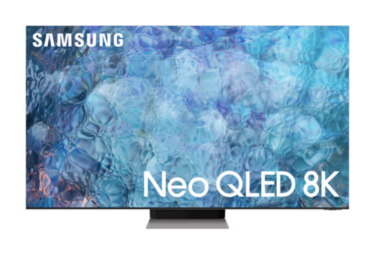 With LCD, backlight is the key
With LCD, backlight is the key
The key to making any LCD truly shine is the quality and sophistication of its backlight solution. While LCD TVs have traditionally struggled in the darker areas of the image, thanks to Mini-LED backlight technology, LCD performance on the dark end has never been closer to OLED—and the brightness advantages, especially for HDR content, remains, resulting in sets that comfortably perform in both bright environments and also critical viewing situations like light controlled home theatres.
This allows you to gather with friends for sporting events when the sun is still shining while still getting a punchy, vibrant image, but to then close the curtains and dim the lights for a perfect movie night after the big game concludes.
The “Blooming” effect
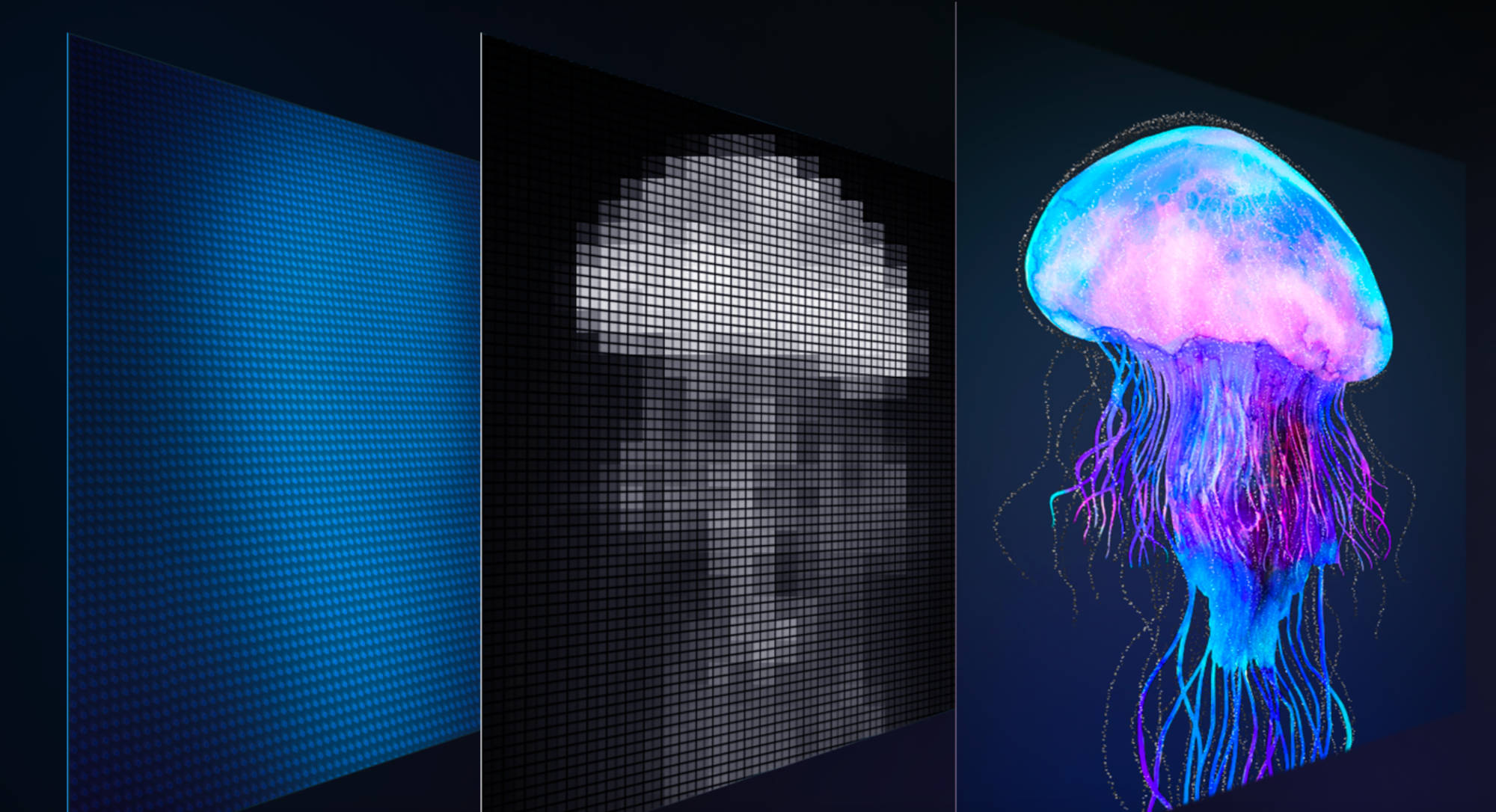
The “Blooming effect” is a smeared, glowy image when a very bright element is beside a dark one. This happens when employing backlight without subtle control and is especially noticeable in darkened rooms. It can occur when there’s white text on a dark background, or when a space ship is travelling across a star field, for example. In a very bright room, this is less distracting since your eyes are particularly excellent at adjusting to the relative contrast between the darkest and the brightest parts of the image.
This effect tends to happen with older and lower-end LCD models as there’s often a single backlight that fills the whole screen, which results in an image that lacks finesse. Mini-LEDs dramatically increase the clarity of LCD televisions by providing a far less heavy-handed solution to backlighting. By making the “bulbs” much smaller you have a better method of matching the pixel density of the colour LCD panels themselves. Since the light source layer is made with smaller and smaller individually controlled elements, the TV accommodates a greater transition between dark and light elements. These smaller diodes are joined by more sophisticated control mechanisms that allow these tiny light sources to be individually adjusted in smaller regions, meaning you’re not compromising the bright areas of your screen to facilitate the dark ones.
Resolution and Mini-LED TVs
Mini-LED backlighting is critical for increasing the clarity and quality of an image on almost any screen size. For televisions, resolution is a major factor on performance, providing not only the “sharpness” of given images but also allowing greater colour fidelity by increasing the number of elements contributing to the overall image.
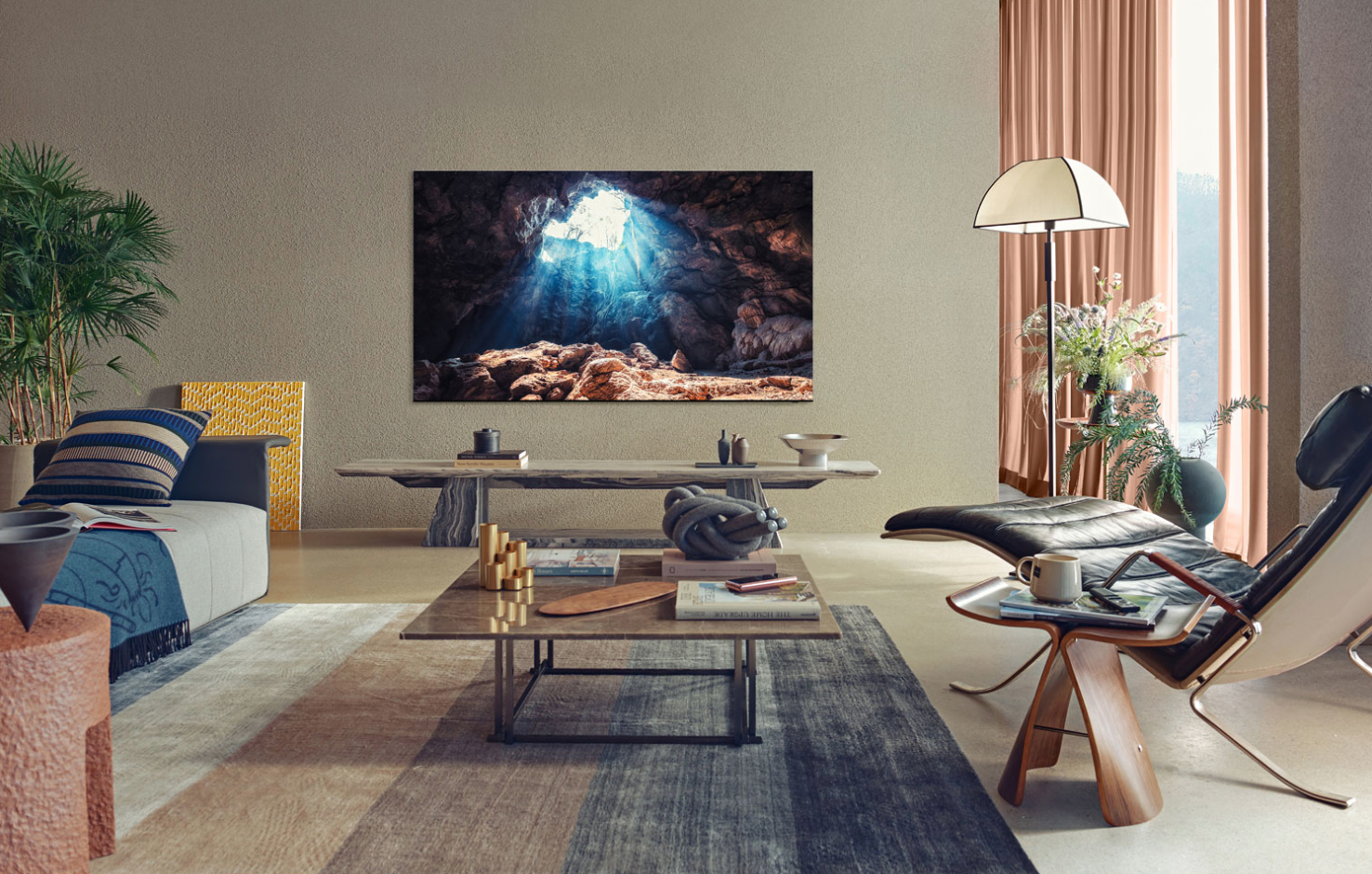
4K TVs
The vast majority of Ultra HD content maxes out at 4K, including premium streaming content, UHD Blu-ray discs, modern game consoles, and YouTube. For the foreseeable future this will be the maximum needed for native reproduction of pretty much anything you’re going to want to view.
For sets 65″ and smaller viewed at a reasonable distance the sweet spot remains 4K sets, and when cramming eight million pixels into a frame that size the advantages of smaller backlighting options are obvious. By matching the density of backlighting zones to the LCD pixels themselves, you’re maximizing impact even on this smaller canvas.
8K TVs
If everything is sourced in 4K, why then would you even consider getting an 8K set? With the jump to 33 million pixels on a screen the enormous computation power is admirable, but are you simply paying for technology that is overkill?
Thanks to the advantages of Mini-LED, the use of 8K panels for larger sets (77″ and bigger) makes a lot of sense. On these very large sets you’re approximating the pixel density of smaller 4K sets, so that the even when watching closely you’re never distracted by errant jaggies, blooming, etc. These high-end television have exceptional up-scaling technology to not only get the most out of your source image, but to ensure that back illumination remains consistent in every sector of the display.
With some manufacturers reserving their finest implementation of scaling, colour fidelity and Mini-LED implementation for their giant 8K sets, it makes sense for some to indulge in these models to maximize the playback of sources from all resolutions. In short, on large screen sizes, your 4K content, or even HD and below, will trump even native resolution screens at that dimension. With these premium sets you’ll benefit from the greater pixel density, the more advanced Mini-LED solutions, and the better up-scaling technology, even if you never watch anything “natively” in 8K.
Benefits of Mini-LED TVs

Mini-LED TVs are better for bright rooms
While OLEDs are limited by how much each of their pixels can generate without deteriorating, the backlighting solution that separates colour reproduction from how bright the set can get means that Mini-LED TVs are ideal for rooms that aren’t completely darkened, or where the maximum impact of HDR (high dynamic range) films is desired.
If OLED is the king of the black light, LCDs easily win the luminance game with their ability to crank a full screen white to levels no other mainstream tech can match.
Mini-LED TVs offer a better contrast ratio and a broader colour scheme

With its exponentially greater number of backlighting sources and zones that allow for a far more granular solution, Mini-LED TVs are capable of producing images with blacker-blacks, punchier whites, and a generally increased picture quality compared to other LCD screens. Mini-LED TVs also have a dramatically increased number of lighting sources and zones, which in turn reduces the physical size of the FALD (full-array local dimming) and makes artifacts like blooming practically a thing of the past while maintaining the high luminance and colour saturation inherent to LCD technology.
Mini-LED TVs are better for bright rooms (and dark ones too)!
LCDs have always been ideal in bright rooms, thanks to the power of intense backlighting to overcome any ambient light and shine with colourful accuracy—even in direct sunlight. However, thanks to Mini-LED technology and the dramatic improvements in more subtle backlight solutions it brought, the notion that OLED is best for dark rooms is upended. LCD TVs using Mini-LED can preserve the subtlety and sophisticated black level performance that rivals even self-emissive sets, which makes them great TVs for dark rooms too.
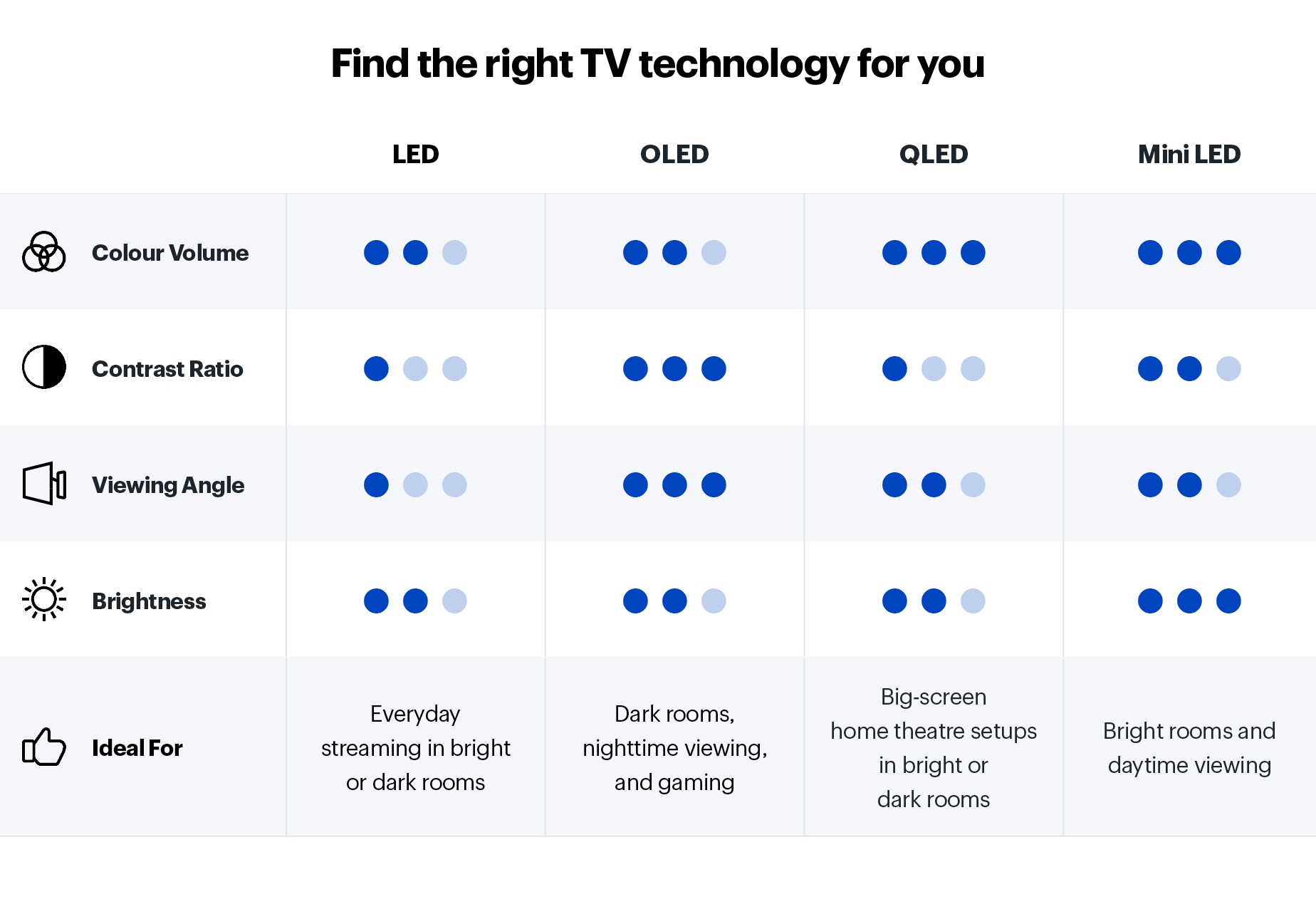
What brands make Mini-LED TVs?
LG, Sony, Samsung, and TCL make Mini-LED TVs, and each brand uses a different name to refer to the technology. LG calls their Mini-LED implementation QNED, Samsung calls theirs Neo QLED, and TCL is calling theirs OD Zero.
There will be differences in implementation, and while the sets will have tens of thousands of new Mini-LED individual lights they will still, for now, be controlled in zones. The big shift, however, is that there will be many more zones than even the highest-end of earlier LCD sets, making a welcome improvement indeed.
The future of Mini-LED is bright

While providing an impressive upgrade over previous sets, it’s clear that the ultimate goal is to have the same number of zones of backlight for every LCD pixel, making the best of OLED and LCD married into one glorious hybrid. We’re still some time away from such technology (dubbed QD-OLED), and there remain many obstacles to overcome.
Similarly, while MicroLED sets are available to purchase that share this ideal 1:1 between each pixel and its illumination solution, the tech is still in its infancy. Even the smallest screens are beyond the budget of most, with certain quirks that need to be ironed out before it becomes the model for consumer sets.
And so, for years to come this elegant solution of Mini-LEDs that incorporates tinier chips and allows for a greater number of controllable zones, with the baked-in benefit of LCD brightness and colour reproduction, makes the wide-spread introduction of this technology one of the more exciting improvements to display technology in many years.
You can shop for Mini-LED TVs right now on Best Buy.



